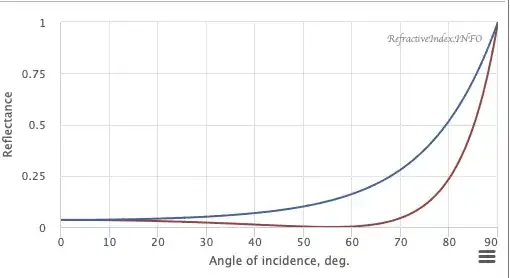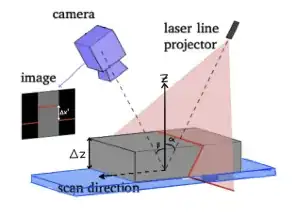I’ve been wondering what would happen if I used a laser of a different wavelength for specular reflection on glass surfaces. Would a shorter, or longer, wavelength give stronger reflection or higher transmission? At the moment I’m working with a 633 nm laser. Both the laser and the camera are positioned at 56 ° with respect to the surface normal—close to Brewster’s angle—so that the reflectance for p-polarised light is almost zero.
Using Fresnel’s equations, I calculated a transmittance of 84.7 %, which implies a reflectance of 15.3 %. As expected, increasing the angle of incidence raises the reflectance.

I found a related discussion here, but it doesn’t quite address my specific question:
Why does reflection occur on transparent materials?
The current experimental setup is shown below. A specimen—in this case paraffin wax with a diffuse top—sits in the middle.
